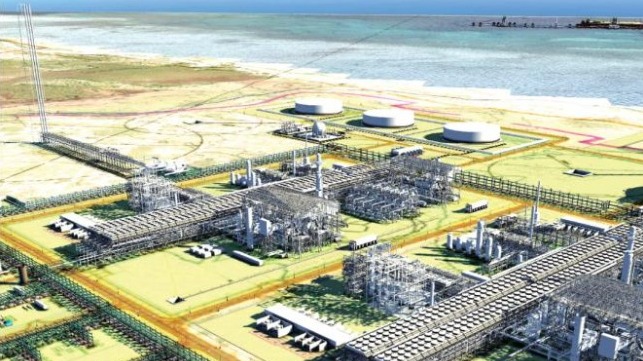Insurgency Threatens Mozambique's Offshore Gas Opportunity

A new maritime security threat is fast developing along the Southern African coastline with the rise of the Cabo Delgado insurgency in Northern Mozambique. Much is at stake, as this instability is occurring in a hydrocarbon hub within the Northern Mozambican Channel, which is estimated to contain over 100 trillion cubic feet of recoverable natural gas – one of the largest gas deposits in the world.
Mozambique Channel, which is about 1000 miles long and 260 miles wide at its narrowest point, is bounded to the east by Madagascar and Mozambique to the west. It used to be an important thoroughfare linking the Indian Ocean to the rest of the world when the Portuguese established colonies in the Indian Ocean basin and East Asia. Construction of the Suez Canal in the mid-1800s deprived Mozambique Channel of its historical link function, as the advent of the canal significantly reduced its maritime traffic. But the rich deposits of natural gas and productive fishing ground - with tuna fisheries estimated to be worth $2 billion per year in the Western Indian Ocean - might see the channel regain its prestige.
The East African seaboard has in recent years become a stomping ground for oil companies following discoveries of oil and gas deposits. In fact, Kenya and Somali have been caught up in a diplomatic tussle due to a disputed 100,000 square kilometer triangular area rich in hydrocarbons. South of this is the Rovuma basin in the Mozambique Channel, where experts predict that if its gas deposits are utilized effectively, Mozambique could become world’s third largest exporter of liquefied natural gas.
Unfortunately, since 2017 instability has started to rock the oil rich region with emergence of Islamic extremist fighters. The main faction of the insurgents is linked to a native extremist group called Ansar al-Sunna although in 2019 ISIS claimed to have carried out an attack against Mozambican forces. It’s has been difficult particularly for independent observers to provide an analysis of the security situation because government troops have been shielding outsiders from interviewing locals amid allegations of human rights abuse.
But how does these insurgents threaten maritime security along the Mozambican channel and offshore natural gas exploration?
In August 2020, the extremist fighters seized the heavily guarded port city of Mocimboa da Praia in Cabo Delgado province. The port is a strategic asset used for cargo deliveries to oil projects 60 kilometers away being developed by companies such as Total and worth around $60 billion. Earlier in the year, eight employees of local gas contractor Fenix Constructions died in an attack in the region, but Total would later release a statement indicating their exploration project in Rovuma Basin was safe. The fighters’ attempt to establish a hold on the port city could create serious challenges for Mozambique’s plans to develop the vast offshore gas fields, further escalating the conflict in poverty-stricken Northern Mozambique.
Energy deposits have not been the primary intensifier of conflict in Northern Mozambique. The insurgents seem to be exploiting local grievances of government neglect in the area. High unemployment rates among the youth have made recruitment and radicalization into Islamic extremism easy and have given the conflict political justification.
Maritime-supported activities such as smuggling and armed robbery at sea will play a critical role in the Cabo Delgado insurgency’s financing. Also, holding on port infrastructure could mean that with time, the insurgents can gain the needed maritime skills and capabilities to venture into piracy - negatively impacting neighboring countries with stable maritime spaces, such as Tanzania and South Africa. A previous example is the Al-Shabab militant group in the Horn of Africa, which captured seaports and benefited from piracy at the peak of its power in 2010-11.
The opinions expressed herein are the author's and not necessarily those of The Maritime Executive.
